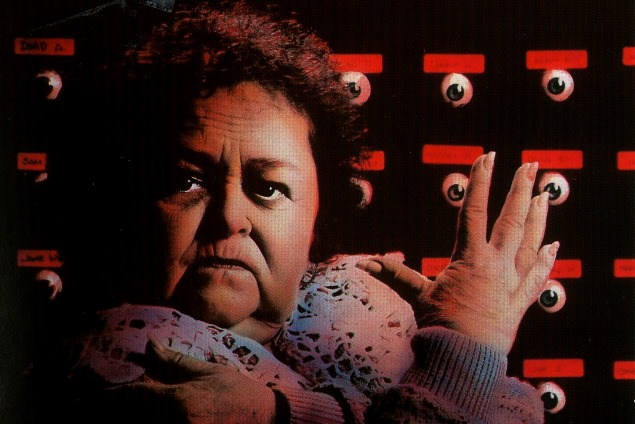
Anguish is the perfect film to watch in a theater during the Halloween season. It’s too bad you’re not likely to have that opportunity.
I am consistently saddened by how obscure and underrated this film is. I’d say its popularity is low enough that I can’t even call it a “cult classic” in good conscience. It sits at a 60% on Rotten Tomatoes…out of five reviews. That’s not exactly a stellar spread of perspectives, but it’s to be expected when the subject in question is a Spanish art-house slasher film with American actors.
Anguish is directed by Bigas Luna. I won’t pretend to be an expert on his filmography. I’ve seen Jamón Jamón, just because it introduced the world to Penelope Cruz and Javier Bardem, but I didn’t really connect with it. His next two films, Huevos de Oro (Golden Balls) and La Teta y La Luna (The Tit and The Moon) sound like poorly-named pornographic films. They’re more like “erotic” comedy/dramas, and I’m not sure I really care to see them. Apparently, Luna is notorious for his fascination with sexual attraction to food, and that makes me even more hesitant.
Few if any of Luna’s eccentricities and art-house porn leanings manifest themselves in Anguish, which predates his most popular works. The film appears to be a major departure from his usual style, and that’s probably for the best.
IMDb’s plot synopsis is criminally simplistic and misleading:
“A controlling mother uses telepathic powers to send her middle-aged son on a killing spree.”
This certainly happens in the movie, but dammit, there’s so much more here!
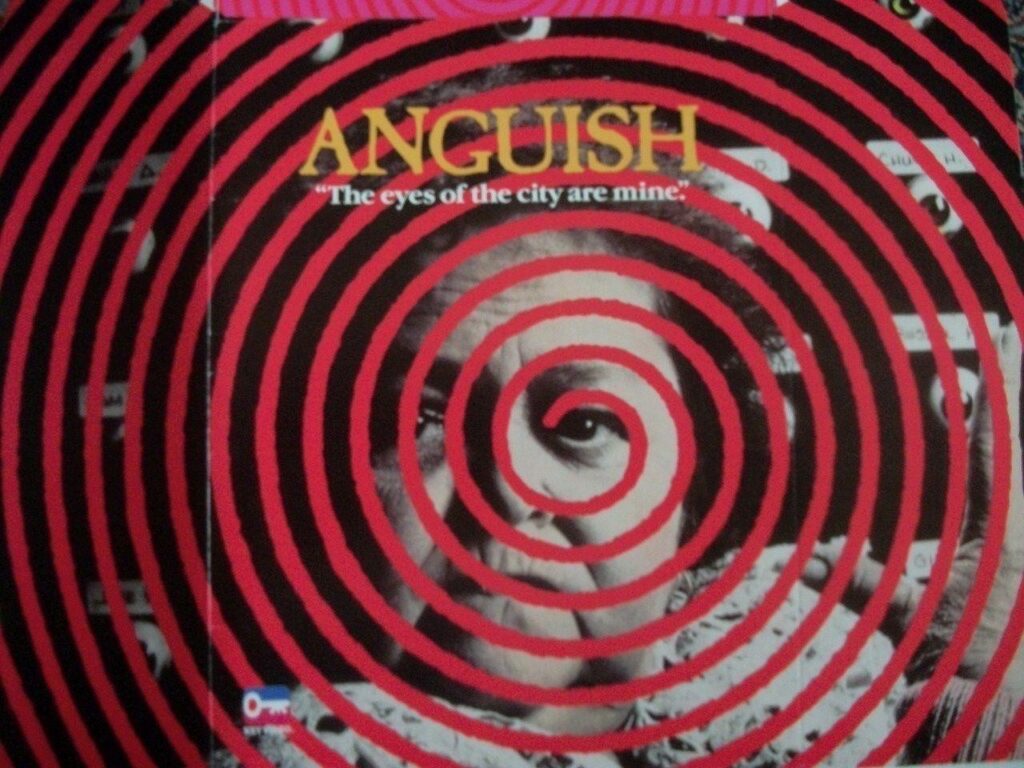
The first thing you’ll likely notice about Anguish’s posters and random screenshots found on the internet is the presence of Zelda Rubinstein. At the time, she was fresh off the success of 1982’s Poltergeist and its 1986 sequel, and she has always seemed comfortable being typecast as a variation on the character she plays in those films. In Anguish however, her shrill voice and dwarfism make her an incredibly creepy villain, and in my opinion, this is the real defining performance of her career.
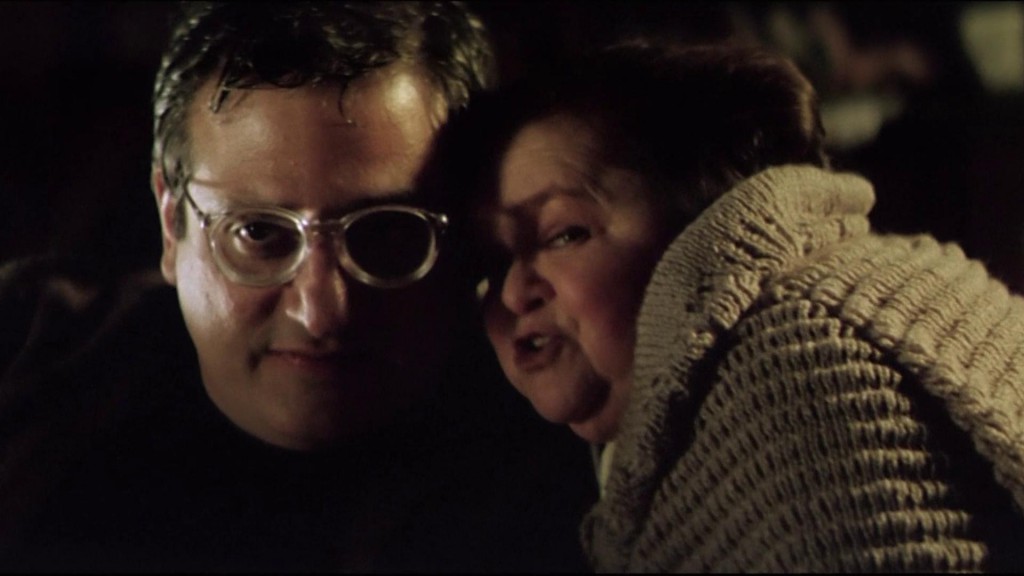
Michael Lerner also happens to be in this movie. As a man who’s been designated to supporting roles quite often (most notably in Barton Fink, for which he received a “Best Supporting Actor” nomination from the Academy), it’s nice to see him in a lead role, and he plays his part well.
Anguish really, really wants to fuck with your head. The opening text reads:
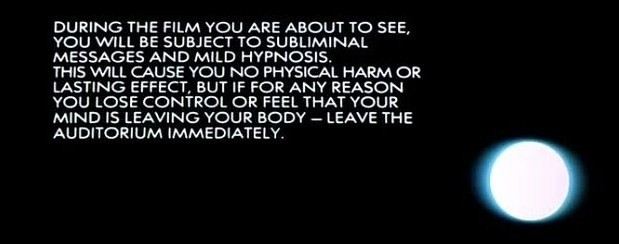
Planting that idea in the audience’s mind is a nice touch, as is the opening narration that warns against talking to unknown individuals for the duration of the film. It’s all at least a little tongue-in-cheek, but in my opinion it works beautifully.
Anguish is about a series of individuals who are gathered in a theater to watch a movie called “The Mommy.” The above disclaimer is seen by the characters, and at various points, the film begins to have a serious physical and mental impact on the audience. One by one, characters get up to use the bathroom or get more popcorn, and most fail to return. Patty, a teenage girl who is noticeably affected by the film, seems to be the only one who’s sure that something is amiss at the theater, in part because the audience is so fascinated with the film.

At the same time, we’re also shown much of “The Mommy,” with the film cutting back to the frame story whenever The Mommy begins to delve into gross, unrelated scenes. Michael Lerner is John Pressman: part-time ophthalmologist’s assistant, full-time mama’s boy. He’s a rather clumsy and uncoordinated fellow with thick glasses, and he obeys his mother Alice (Zelda Rubinstein) to a fault. John’s eyes are slowly deteriorating, and perhaps for this reason, Alice hypnotizes him into murdering people to collect their eyes. At a certain point in The Mommy, the film begins to blur the reality of the events that occur in the film and those that occur in the theater. I probably make that sound far more complicated than it is, but I admire the complexity and originality of its premise.
Anguish displays many typical slasher movie tropes, such as the “final girl” and the obliviousness of the characters who don’t realize they’re being stalked and murdered one-by-one. Really, it revels in these tropes, and acts as a tribute to that era of horror films.
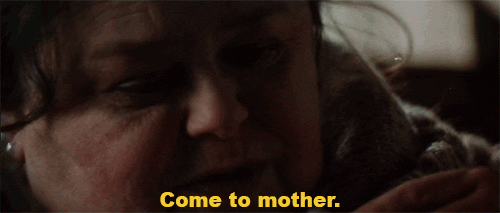
Zelda Rubinstein is absolutely phenomenal as Alice. As I mentioned before, she uses the creepiest aspects of her voice and deformity (which in other films are played up to make her character sassy, wise, or even endearing), and amps up the weird factor to 11. This woman loves her snails, and they appear to act as some kind of conduit for the psychic powers she uses to control her son John. Every move she makes is awkward and uncanny, and if this were a more widely available film, you can bet Zelda would have been known for this role over Poltergeist.
There are several aspects of Anguish that do feel dated. Some of the gore effects are downright corny, the meta-film aspect might feel pretentious to some, there’s some overacting, and teenagers are all narcissistic and vapid. In spite of that, these all feel like aesthetic tributes to slasher films, a love letter to a genre that had recently reached its peak, and was now on a steady decline. Bigas Luna took the weirdest aspects of his little Spanish art-house world and an adherence to traditional slasher values, and blended them together in what I believe is one of the most entertaining films of the 1980s.
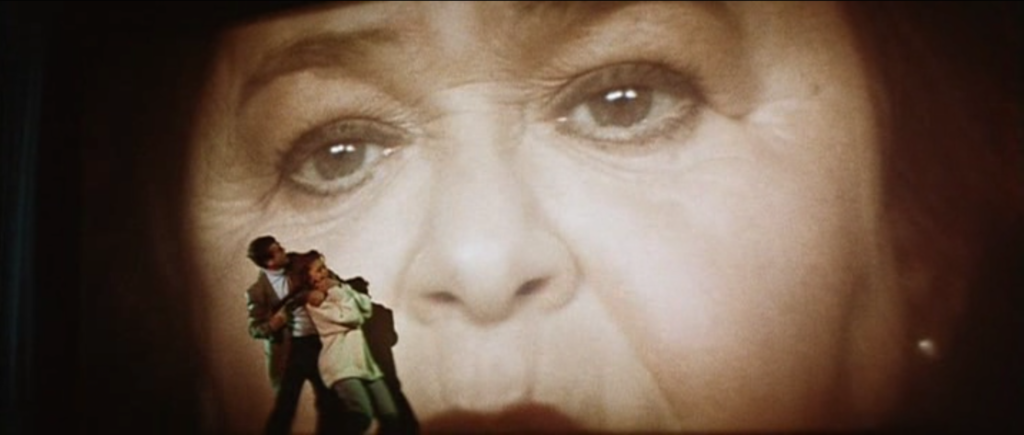
This is a film about a bunch of people watching a movie about a bunch of people watching a movie about a disgruntled little person who manipulates her son into murdering people and stealing their eyes.
I can’t imagine a more perfect film to view around Halloween in a small theater.
8/10